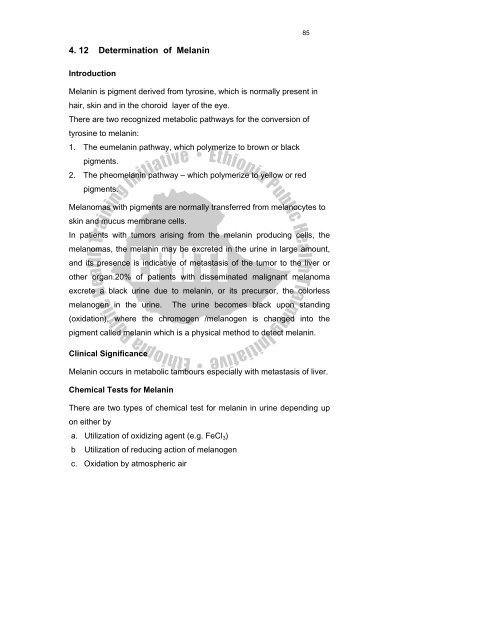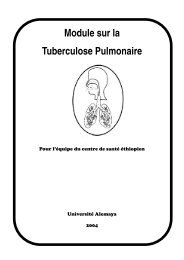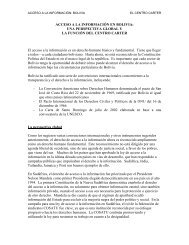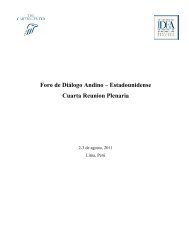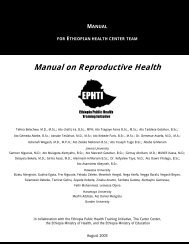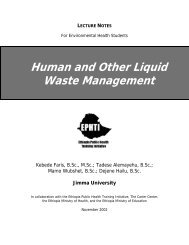Urinalysis - The Carter Center
Urinalysis - The Carter Center
Urinalysis - The Carter Center
You also want an ePaper? Increase the reach of your titles
YUMPU automatically turns print PDFs into web optimized ePapers that Google loves.
85<br />
4. 12 Determination of Melanin<br />
Introduction<br />
Melanin is pigment derived from tyrosine, which is normally present in<br />
hair, skin and in the choroid layer of the eye.<br />
<strong>The</strong>re are two recognized metabolic pathways for the conversion of<br />
tyrosine to melanin:<br />
1. <strong>The</strong> eumelanin pathway, which polymerize to brown or black<br />
pigments.<br />
2. <strong>The</strong> pheomelanin pathway – which polymerize to yellow or red<br />
pigments.<br />
Melanomas with pigments are normally transferred from melanocytes to<br />
skin and mucus membrane cells.<br />
In patients with tumors arising from the melanin producing cells, the<br />
melanomas, the melanin may be excreted in the urine in large amount,<br />
and its presence is indicative of metastasis of the tumor to the liver or<br />
other organ.20% of patients with disseminated malignant melanoma<br />
excrete a black urine due to melanin, or its precursor, the colorless<br />
melanogen in the urine. <strong>The</strong> urine becomes black upon standing<br />
(oxidation), where the chromogen /melanogen is changed into the<br />
pigment called melanin which is a physical method to detect melanin.<br />
Clinical Significance<br />
Melanin occurs in metabolic tambours especially with metastasis of liver.<br />
Chemical Tests for Melanin<br />
<strong>The</strong>re are two types of chemical test for melanin in urine depending up<br />
on either by<br />
a. Utilization of oxidizing agent (e.g. FeCl 3 )<br />
b Utilization of reducing action of melanogen<br />
c. Oxidation by atmospheric air


